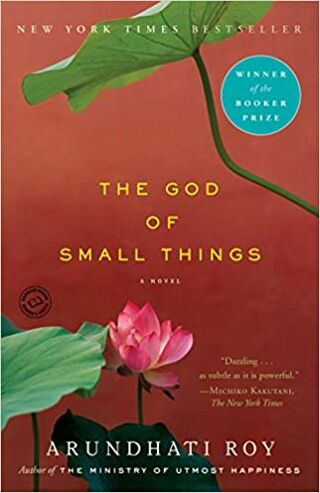Scent
Smells Awaken the Mind
The cognitive value of an under-respected sense.
Posted January 22, 2021
In 2018, Asifa Majid et al. published a study showing that in 20 diverse languages worldwide, no “universal hierarchy of the senses” can be found with “higher” senses more easily expressible in language at the top and “lower,” less articulable senses at the bottom (Majid et al. 2018, 11371).
Majid et al.’s study disproves the Western notion that vision and sound, which some philosophers have associated with reason and knowledge and which can be described with rich vocabularies in some Western languages, are more accessible to the intellect than touch, smell, and taste, which register the feelings of bodies.
Majid’s group found one exception, however. In most of the languages they studied, smells were hard to characterize (Majid et al. 2018, 11375). Speakers tended to describe smells in source-based ways (“It smells like a banana”) or evaluative ways (“It stinks”) rather than in abstract, analytical ways as a perfumer might (Majid et al. 2018, 11374). There may not be a universal hierarchy of the senses, but people worldwide struggle to describe smells.
When people perceive smells, they are interpreting the activity of populations of olfactory receptors. Rather than detecting specific odors (such as banana), these receptors (about 350 types) from one multigene family respond to structural features of airborne molecules stuck in the mucus of the olfactory epithelium (Kandel et al. 2013, 714). A person’s olfactory system draws the conclusion “banana” by comparing a current pattern of activity to previous patterns it has experienced. Neural pathways from the olfactory cortex to the amygdala, which plays a vital role in emotion processing, and the hypothalamus, which coordinates basic drives, account for the notorious ability of smells to evoke emotions (Kandel et al. 2013, 721).
Philosophically, we can never know whether one person’s experience of a banana’s scent is the same as another person’s because sensory experience depends not just on the immediate context (Is there an oil refinery nearby?) but on what a person has smelled in the past and what emotions s/he has associated with those smells. In healthy people, the ability to detect smells can vary by a factor of 1000 (Kandel et al. 2013, 721). It is no wonder that humans have a hard time conveying smells through words.
Fiction writers excel at describing smells and their effects on characters’ minds. In stories that pull readers in, characters experience the world in multiple sensory modalities at once, much as people do in lived experience (Starr 2013, 78; Auyoung 2018, 22). By choosing words skillfully, writers cue readers not just to imagine several sensations simultaneously but to blend them into a unified mental and bodily impression. Some fiction writers guide readers’ imaginations so adeptly, it may be possible to learn from their descriptions how sensory modalities are integrated in human brains.
Certain modalities complement each other like yin and yang in their abilities to scan the surrounding environment. Both neuroscientists and literary scholars have noted the close association between vision and touch, which map space in long-range and intimate ways, respectively (Lacey & Sathian 2019, 172; Starr 2010, 287). A description of how the world looks to the eye and feels to the skin offers readers the perceived and the perceiver simultaneously. By helping readers to “zoom in,” a passage that moves from vision to touch invites readers to enter a character’s mind and body. Smell also has a close affinity with touch, and writers often describe smells in tactile terms. But in complex descriptions, smell can do much more. A scent can serve as a solvent or binding agent that blends many sensations into one feeling with emotional dimensions.

Consider this description by Arundhati Roy in her novel, The God of Small Things:
The Torch Man opened the heavy Princess Circle door into the fan-whirring, peanut-crunching darkness. It smelled of breathing people and hairoil. And old carpets. A magical, Sound of Music smell that Rahel remembered and treasured. Smells, like music, hold memories. She breathed deep, and bottled it up for posterity. (Roy 2017, 98-99)
Several pages later, Roy refers to the movie smell in shorthand as “the hairoil darkness” (Roy 2017, 105). Roy’s description combines sound, smell, taste, vision, and touch because the hairoil can be felt, at least imaginatively. Perceived by 7-year-old Rahel, the “hairoil darkness” of a none-too-clean movie theater is a state of mind worth remembering. In Rahel's impression, smell predominates, dissolving the darkness, whirring, and oiliness into a substance that can be bottled imaginatively.
Rahel perceives the movie smell in an emotionally fraught moment. In the pages between the two descriptions, her twin brother Estha is sexually abused by a pedophile. Estha and Rahel, their mother Ammu, their uncle Chacko, and their great aunt Baby Kochamma are watching The Sound of Music on an outing to pick up Chacko’s British ex-wife, Margaret, and his daughter Sophie Mol, who will be visiting from England. Chacko and Baby Kochamma value Sophie Mol infinitely more than they do Rahel and Estha. They resent having to live with the twins and Ammu, who has left the children's abusive, alcoholic father. In Roy’s complex narration, the “hairoil darkness” is described simultaneously by 7-year-old Rahel in the moment, 30-year-old Rahel remembering, and a wiser, older narrator who channels them both. Seven-year-old Rahel enjoys the movie smell; 30-year-old Rahel recalls it; but only the narrator knows of all the lurking horrors. Emotionally, the hairoil darkness works as a spot of pleasure in a painful world.

Maybe because of smell’s close relationship with emotion, smell plays a special role in metaphors. In Western figures of speech, vision often represents knowledge, especially through references to light, as in “I see,” “She shed some light on the subject,” or “He gained a bird’s-eye view.” Smell metaphors describe a different way of knowing. “I smell a rat” suggests intuitive knowledge that can’t be documented.
Sadly, smell has also been used to convey racist feelings because they are irrational and can’t be supported with evidence. Central to The God of Small Things is a forbidden relationship between the twins’ mother, Ammu, and the gifted Dalit worker, Velutha, whose lives are destroyed when their love is discovered. When Baby Kochamma learns of their love, she wonders, “How could she stand the smell? Haven’t you noticed? They have a particular smell, those Paravans” (Roy 2017, 257). Does Baby Kochamma believe in the Paravan smell because she perceives it, or does she perceive it because she believes in it? It is hard to know. Metaphorically, smell can represent what one feels but can’t prove, from a valuable hunch to an irrational hate.
Majid et al.’s study shows the foolishness of ranking sensory modalities based on the concepts with which Western cultures have associated them. Most of the study’s participants had trouble describing smells in abstract ways, but Lao and Semai speakers did quite well (Majid et al. 2018, 11374). Smell has value as a perceptive and cognitive tool because it challenges so many people’s brains. Working determinedly to describe a smell may mean striving to understand a disturbing emotion or an undervalued form of knowledge. Struggling to describe powerful sensations and feelings can lead to mind-opening thoughts.
References
Auyoung, E. (2018). When Fiction Feels Real: Representation and the Reading Mind. Oxford University Press.
Kandel, E., et al. (2013). Principles of Neural Science. McGraw-Hill.
Lacey, S. & Sathian, K. (2019). “Visuo-Haptic Object Perception.” In Multisensory Perception: From Laboratory to Clinic. Edited by K. Sathian and V. S. Ramachandran, Academic Press.
Majid, A., et al. (2018). “Differential Coding of Perception in the World’s Languages.” PNAS 115: 11369-11376.
Roy, A. (2017). The God of Small Things. Harper Collins.
Starr, G. (2010). “Multisensory Imagery.” In Introduction to Cognitive Cultural Studies. Edited by Lisa Zunshine. Johns Hopkins University Press.
Starr, G. (2013). Feeling Beauty: The Neuroscience of Aesthetic Experience. MIT Press.




